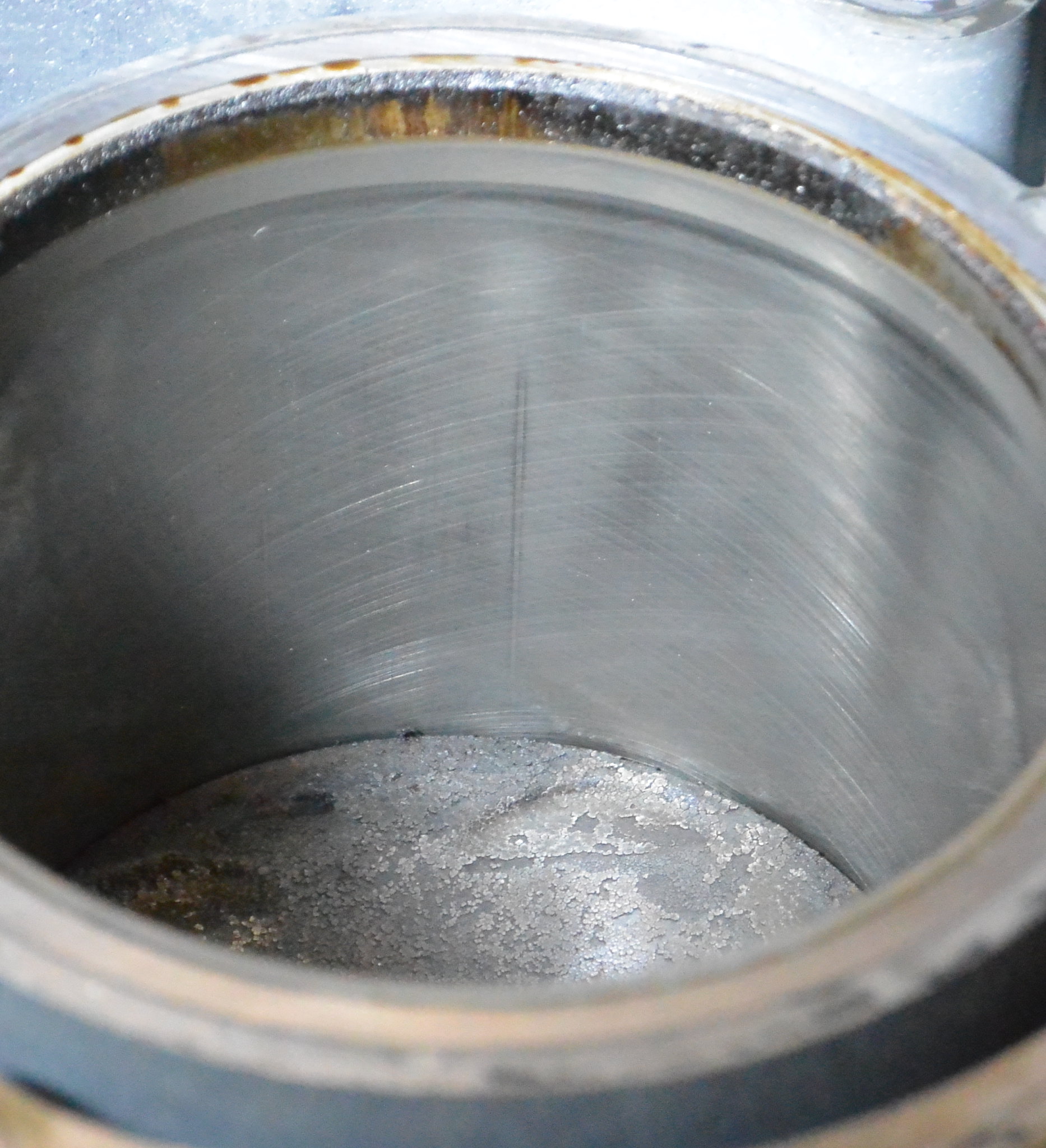Petri
Member
The #3 cylinder of my 2005 ABS FJR (euro model) has low pressure (exhaust valve leaking), so I removed the cylinder head.
I found, besides what appears to be a bad valve, a small vertical scratch in the cylinder bore forward side. Otherwise the cylinders look immaculate (the honing marks are still visible - after 94000 km). The scratch can be felt when sliding a finger over it. Not so very clearly or easily, but nevertheless.
It does not look like anything might have broken off from the valves that might have caused the scratch. I really do not like the idea of having to open the engine more to replace broken piston ring(s) and maybe the piston itself.
Is there any way to check it without opening, or any chance the scratch might be from something else? Picture below:

I found, besides what appears to be a bad valve, a small vertical scratch in the cylinder bore forward side. Otherwise the cylinders look immaculate (the honing marks are still visible - after 94000 km). The scratch can be felt when sliding a finger over it. Not so very clearly or easily, but nevertheless.
It does not look like anything might have broken off from the valves that might have caused the scratch. I really do not like the idea of having to open the engine more to replace broken piston ring(s) and maybe the piston itself.
Is there any way to check it without opening, or any chance the scratch might be from something else? Picture below:

Last edited by a moderator:































































